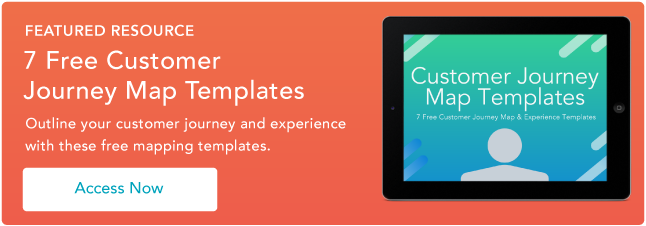With the Fed recently raising interest rates, it is clear that consumer confidence is up. Shoppers have more money in their pockets and are willing to spend it. So, trying to persuade them to purchase won’t be as much of a need in 2016 as compared to years past during the economic downturn.

No, this year, attracting and converting customers will be the biggest challenge, especially for brands who have not embraced the omnichannel trend. Why? Easy—studies suggest that the rise of technology and the plethora of options it affords us has lowered human attention span to less than that of a goldfish. For retailers, this means that a potential new customer wanting to purchase, say, a dress, has a lot of distractions in her way before she lands on your site.
The Rise of Omnichannel
Let’s take a step back though. Omnichannel is an industry buzzword, and perhaps an overused one at that. But, its implications pack a meaningful punch.
Omnichannel simply means that your brand is capable of selling absolutely anywhere the consumer is willing to buy. In an omnichannel world, there is no distinction between retail stores or ecommerce or mobile commerce or social commerce. It is all merely commerce, and the need to manage business operations from a centralized hub, pulling in sales and inventory data from physical stores, ecommerce sites and various marketplaces, is key to a successful strategy.
Recent data supports this, as well. An Adlucent study found that 47% of shoppers plan to start researching products on a search engine like Google or Bing, followed by Amazon with 31%, and 13% in stores. Bloomberg data released earlier this year reported similar findings: 44% of consumers start their product search on Amazon, with 34% doing so on search engines.
Yet, no matter where consumers start their search, 90% of retail sales still occur in store, and 95% of all retail sales go to stores which have brick-and-mortar locations. In fact, it seems very much as though mobile commerce and physical commerce are converging: 75% of shoppers use their mobile device in store, promoting the use of beacons to push in-store notifications bringing that short consumer attention span back to the brand at hand.
These numbers are likely the impetus behind Amazon’s recent opening of a brick-and-mortar bookstore, or the ever-growing physical locations of once only-online stores including ModCloth, Nasty Gal, Birchbox, Warby Parker and more. Indeed, in a recent USA Today article, Warby Parker CEO Neil Blumenthal said the company sees itself as medium agnostic.
“In five years, I’m not sure what other channels will exist,” he says. “The key is to stay flexible and follow the customers.”
Of course, the reverse is true as well. Many once offline-only sellers are opening up digital storefronts, with mobile-friendly templates to get the most out of Google’s recent mobile-local search algorithm play, among other online benefits. Luxury retail is one of the fastest growing online segments due to the previous reluctance of brands like Chanel, Dior and more to open online shops. Exclusivity is no longer the name of the game, folks, at least not when it comes to discoverability.
So, what is a scaling brand to do to compete with ever-eroding boundaries between the various commerce preferences of consumers? Well, here are a few ideas.
Open a Popup Shop, Even to Just Test It Out
Have you heard of Storefront? This startup works similarly to an Airbnb for your business. You enter your location and they will find a space for you to rent. This is a smart strategy for scaling brands. Invest in a few pop up shops in your area and perform a bit of an A/B test on location.
Plus, Sucharita Mulpuru, a senior analyst with Forrester Research, says that an offline store could be well worth its costs, drawing on analysis of foot traffic and customer conversation. “It costs $10,000 to pull a focus group together,” she said. “If you look at how much it would cost you to do market research, and the amount of market research you gain just by observing people, it’s the equivalent of 100 focus groups.”
Optimize Your Site for Search Engines
This goes well beyond SEO. Yes, be sure that your SEO is rock-solid and remember that SEO is not a “set it and forget it” thing. You must be consistently updating. Make sure all product pages have proper meta-data and page titles. Write your own, compelling and keyword rich product descriptions. Launch a blog to add personality to your brand, and to earn growing ranking authority on search engines.
Got all of that? Great—now to the technical side. Make absolutely sure your site is mobile-friendly. Responsive templates are one of the best ways to do this. Add SSL protections to your site. Your whole site. Google has yet to completely verify that this is used in how they rank sites, but multiple executives have mentioned the importance of this. Take note.
Make Marketplaces Your Friend
This is a hard one for a lot of growing online businesses. Many of you started on an Etsy or Amazon, and decided to move away from those marketplaces to increase your total cost of ownership and begin to build serious brand awareness. That’s great, and that was a smart move.
Now that your site is up and running, though, marketplaces can increase your product discoverability and bring even more people to your site as well as your brick-and-mortar. Amazon product listings often instill brand trust and credibility for consumers. Plus, almost half of all online product search begin on Amazon. If your products aren’t there, you aren’t even in the running to win those customers.
Marketplace product listing is a strategy all its own. You don’t need to put every single one of your SKUs on marketplaces. In fact, it might be better that you don’t. Instead, slightly alter the SKUs you sell on Amazon, Etsy, eBay and the like, and then price them accordingly. On Amazon, for instance, you’ll be competing for the lowest price—so be sure you place products there with high enough margins that you can be competitive.
This can play well into a full omnichannel strategy as well. For instance, stores like Best Buy place products on Amazon, but offer in-store price matching, enabling them to sell additional products to savvy customers in-store, and let those who prefer marketplaces check out there.
Conclusion
In all, retailers of all sizes need to be utilizing all available product discoverability touchpoints. Customers are increasingly blurring the lines between commerce points of sale, whether that be offline, on your website or via a marketplace. If your products don’t appear when and where a customer searches for them, you won’t be closing any sales. Instead, you’ll likely be losing those sales to a quicker competitor—one who is constantly watching the industry and prepping their ecommerce backend to better serve as a hub, rather than a stand-alone.


![6 Steps to Create an Outstanding Marketing Plan [Free Templates]](https://www.hubspot.com/hubfs/marketingplan_20.webp)







